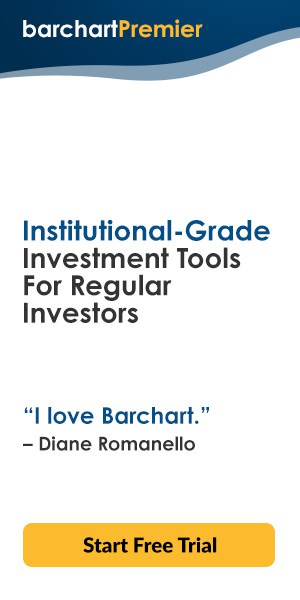Options investors have a wide range of options strategies at their disposal. Two popular and widely used strategies are covered calls and cash-secured puts. These strategies allow investors to generate income from their existing stock holdings or take advantage of potential stock purchases while mitigating risk.
Covered calls involve selling call options after the investor has already purchased the stock. By selling these call options, investors earn premium income while giving up the potential for further upside gains on the stock beyond the call option’s strike price. This strategy is often employed by investors who believe the underlying stock will experience limited upward movement in the near term.
On the other hand, cash-secured puts involve selling put options with sufficient cash reserves to cover any potential purchase obligations if assigned. This strategy allows investors to acquire stocks at a predetermined price (the strike price), even if they do not own them. By selling put options, investors collect premiums upfront and can either keep them if the options expire worthless or use them as a discount for purchasing stocks.
Both covered calls and cash-secured puts offer advantages and disadvantages for traders looking to generate income or acquire stocks at favorable prices. These strategies provide opportunities for profit regardless of market direction, making them versatile tools in an investor’s arsenal.
In this article, we will explore these two strategies in detail, discussing how they work, their potential risks and rewards, as well as key considerations when implementing them in various market conditions. By understanding covered calls and cash-secured puts, investors can make informed decisions when incorporating these option trading techniques into their investment portfolios.
Understanding The Basics Of Covered Calls
Covered calls are a popular options trading strategy that involves selling call options against an underlying stock position. This strategy is commonly used by investors who own stocks and want to generate additional income from their holdings.
In a covered call strategy, the investor sells call options on stocks they own. By doing so, they receive a premium from the call option buyer in exchange for granting them the right to buy their shares at a predetermined price (known as the strike price) within a specified timeframe.
The key advantage of covered calls is that they allow investors to generate income while still maintaining ownership of their stocks. If the stock price remains below the strike price by expiration, the investor keeps both their shares and the premium received from selling the call option. However, if the stock price rises above the strike price, there is a possibility that their shares will be called away (i.e., sold) at that price.
To execute a covered call strategy, an investor must have enough shares of a particular stock to cover each call option contract sold. For example, if an investor owns 100 shares of XYZ company and sells one call option contract (which typically represents 100 shares), they would be considered fully covered.
It’s important to note that covered calls limit potential gains for investors if the stock price rises significantly above the strike price. However, this risk is mitigated by receiving premiums from selling call options. Furthermore, investors can adjust their strike prices and expiration dates based on market conditions or their outlook for future performance.
Exploring The Benefits Of Covered Calls
Covered calls are a popular options strategy that can provide investors with several benefits. By effectively understanding and utilizing this strategy, investors can potentially enhance their overall returns and manage risk more efficiently.
One of the primary advantages of covered calls is the potential for generating additional income. When an investor sells a call option on a stock they already own (hence “covered”), they receive a premium from the buyer of the option. This premium serves as income for the investor, regardless of whether the option is ultimately exercised or expires worthless. By consistently selling covered calls on their holdings, investors can generate regular cash flow, which can be particularly appealing in low-yield environments.
Another benefit of covered calls is that they offer downside protection. Since the investor already owns the underlying stock, any decline in its price will be partially offset by the premium received from selling the call option. This limited protection helps reduce potential losses compared to holding stocks outright during market downturns. In more moderate cases, the investor can sell the stock at a lower price than the original purchase price since the premium received effectively lowers the breakeven price of the position.
Moreover, covered calls allow investors to profit from stagnant or slightly bullish markets potentially. If the stock price remains below the call option’s strike price until expiration, then it will not be exercised, and investors can retain both their shares and premiums received. In such cases, covered calls allow earning income while waiting for potential capital appreciation.
Covered calls can also be used as a risk management tool by lowering overall portfolio volatility. The income generated from selling call options helps cushion against potential market fluctuations and provides predictability to an investment strategy.
Evaluating The Risks Associated With Covered Calls
While covered calls can be an effective strategy for generating income and managing risk, it is crucial to carefully evaluate the risks involved before implementing this options strategy.
One of the primary risks associated with covered calls is the potential for limited upside. By selling a call option against a long stock position, you are essentially giving up some of the potential gains if the stock price rises significantly. If the stock price exceeds the strike price of the call option, your shares may be called away, preventing you from benefiting from further appreciation.
Another risk to consider is market volatility. Covered calls can be adversely affected by sudden and significant price movements in either direction. If the underlying stock experiences a sharp decline in value, your profit potential may be limited as you have already received premium income from selling the call option. Additionally, if there is a substantial increase in volatility, it can cause premiums to rise and potentially erode any gains from selling covered calls.
Furthermore, it’s important to assess company-specific risks when trading covered calls. Factors such as earnings announcements, regulatory changes, or industry developments can impact a stock’s performance and subsequently influence your options strategy. It is essential to thoroughly research and monitor any company before engaging in covered call trading to mitigate these specific risks.
Lastly, investors must consider their individual risk tolerance and financial goals when evaluating covered calls. While this strategy offers income generation opportunities, it also carries inherent risks that could result in loss or missed profit opportunities.
Introduction To Cash-Secured Puts And How They Work
While covered calls are a popular option trading strategy, cash-secured puts offer a distinct alternative that can be equally beneficial for traders. A cash-secured put is an options trading strategy where an investor sells a put option contract on a specific stock or security they are interested in acquiring.
By selling this contract, the investor agrees to buy the underlying asset at a predetermined price (known as the strike price) within a specified time frame (known as the expiration date) if the stock reaches or falls below that strike price. The term “cash-secured” refers to the fact that when executing this strategy, investors must have enough cash in their account to cover the potential purchase of the underlying asset if assigned.
This requirement ensures that investors have sufficient funds available to fulfill their obligation if they are obligated to buy the stock. Cash-secured puts provide traders with two potential outcomes. First, if the stock remains above the strike price until expiration and thus does not reach or fall below it, then the investor keeps both the premium received from selling the put option and avoids purchasing any shares of stock. This outcome allows traders to profit from time decay and market movements without ever owning shares of stock.
Secondly, if assigned on their obligation, investors will acquire shares of stock at an effective purchase price equal to or lower than their chosen strike price. This scenario can be advantageous for those interested in owning shares of that particular security anyway since they effectively acquire it at a discounted rate.
Overall, cash-secured puts allow traders to generate income while potentially acquiring stocks at attractive prices.
Analyzing The Advantages Of Cash-Secured Puts
One key advantage of cash-secured puts is the ability to generate income. By selling put options, investors receive premiums upfront, which can significantly boost their overall returns. The premium received is compensation for taking on the obligation to potentially buy the stock at a predetermined price (strike price) within a specific timeframe (expiration date). If the stock price remains above the strike price until expiration, investors keep the premium as profit without buying any shares.
Moreover, cash-secured puts allow investors to potentially acquire stocks at lower prices than their current market value. If an investor is assigned shares due to option exercise, they effectively purchase those shares at a lower cost basis than if they had bought them outright in the market. This discount can provide an excellent opportunity for long-term investors looking to accumulate stocks in companies they believe in.
Additionally, cash secured puts offer flexibility and control over one’s investment decisions. Investors have the freedom to choose strike prices and expiration dates that align with their risk tolerance and investment goals. They can also adjust their approach based on market conditions or changes in their outlook for specific stocks.
Examining The Potential Risks Of Cash Secured Puts
One of the primary risks of cash-secured puts is the potential for substantial financial loss. When selling a put option, investors are obligated to buy the underlying asset at a predetermined strike price if it falls below that level before expiration. Investors may face substantial losses if the stock price declines significantly as they are forced to purchase shares at a higher price than their market value.
Moreover, another risk is market volatility. Fluctuations in market conditions can lead to significant changes in stock prices, affecting the profitability of cash secured put positions. Investors must carefully analyze market trends and consider how volatility may impact their investments.
Counterparty risk is another thing to consider. This refers to the possibility that the party on the other side of the trade may default or fail to fulfill their obligations. In such cases, investors may not receive their expected premiums or face difficulties in closing out positions.
Furthermore, there is also an inherent opportunity cost when employing this strategy. By tying up capital as collateral for selling puts, investors forego other potential investment opportunities that could yield higher returns or diversify their portfolios.
Lastly, it is important to note that cash-secured puts are not suitable for all investors and require careful consideration of personal financial circumstances and risk tolerance levels. Novice traders should seek professional advice or gain sufficient knowledge before employing the cash-secured put strategy, or any strategy for that matter.
Comparing Covered Calls And Cash Secured Puts
One of the main similarities between covered calls and cash-secured puts is that they generate income through the premium received from selling options contracts. In both cases, the investor receives a payment upfront for taking on certain obligations or risks associated with the options contract.
However, there are also significant differences between these two strategies. The first notable difference lies in their market outlook. Covered calls are typically employed by investors who have a neutral to slightly bullish view of the underlying stock. They sell call options against their stock holdings, believing the stock price will remain relatively stable or increase slightly over a given period.
On the other hand, cash-secured puts are employed by investors who have a more bullish view of the underlying stock. They sell put options to buy the underlying stock at a predetermined strike price if it falls below that level. This strategy allows them to acquire shares at a discount while generating income from selling puts.
Another key difference is related to risk management. Covered calls limit potential profits but offer downside protection through owning the underlying shares. Cash-secured puts carry higher risk as they require setting aside capital to cover potential losses if assigned shares at the strike price.
Factors To Consider When Choosing Between Covered Calls And Cash-Secured Puts
Both strategies have their own advantages and risks, so understanding these factors can help investors make an informed decision.
Firstly, risk tolerance plays a crucial role in selecting the appropriate strategy. Covered calls involve owning the underlying asset while selling call options against it. This strategy offers limited profit potential but provides downside protection to some extent. On the other hand, cash-secured puts require selling put options while having enough funds to cover the potential purchase of the underlying asset if assigned. This strategy carries more risk as it involves owning the asset at a predetermined price if the option is exercised. Another important factor to consider is market outlook.
Covered calls are commonly used in neutral or slightly bullish markets when investors expect minimal price movements. It allows them to generate income from premium while still benefiting from any moderate upside potential. Conversely, cash-secured puts are suitable when investors have a bullish outlook on a particular stock or index since they are willing to buy it at a predetermined price.
Furthermore, time commitment should be evaluated when choosing between these strategies. Covered calls require ongoing monitoring of the position as well as potential adjustments or rollouts if necessary. In contrast, cash-secured puts involve less active management since investors only need to wait for expiration or assignment. Lastly, liquidity should be considered before implementing either strategy. If there is low liquidity in options contracts for a specific stock or index, executing covered calls may become challenging due to wider bid-ask spreads and potentially lower premiums. Cash-secured puts might face similar issues if there is insufficient demand for put options.
Conclusion: Making An Informed Decision Based On Your Investment Goals
Covered calls allow investors to generate additional income by selling call options on stocks they own. This strategy provides a steady stream of premium income but limits potential gains if the stock price rises significantly. On the other hand, cash secured puts enable investors to potentially acquire stocks at a lower price while generating premium income upfront. However, this strategy carries the risk of having to purchase stocks if their prices decline below the strike price.
If you are seeking a conservative approach with limited upside potential but consistent income generation, covered calls may be more suitable for you. Conversely, if you have a long-term bullish outlook on certain stocks and are willing to acquire them at potentially lower prices while earning premium income, cash secured puts might be a better fit.
Additionally, consider your risk tolerance when choosing between these strategies. Covered calls offer some downside protection as you already own the underlying stock; however, they limit potential gains if stock prices surge. Cash secured puts involve greater risk as they require purchasing stocks if prices decline significantly.
Ultimately, both covered calls and cash secured puts can provide attractive opportunities for income generation in different market conditions. By understanding your investment objectives and evaluating these strategies’ pros and cons thoroughly, you can make an informed decision that aligns with your financial goals and risk appetite



